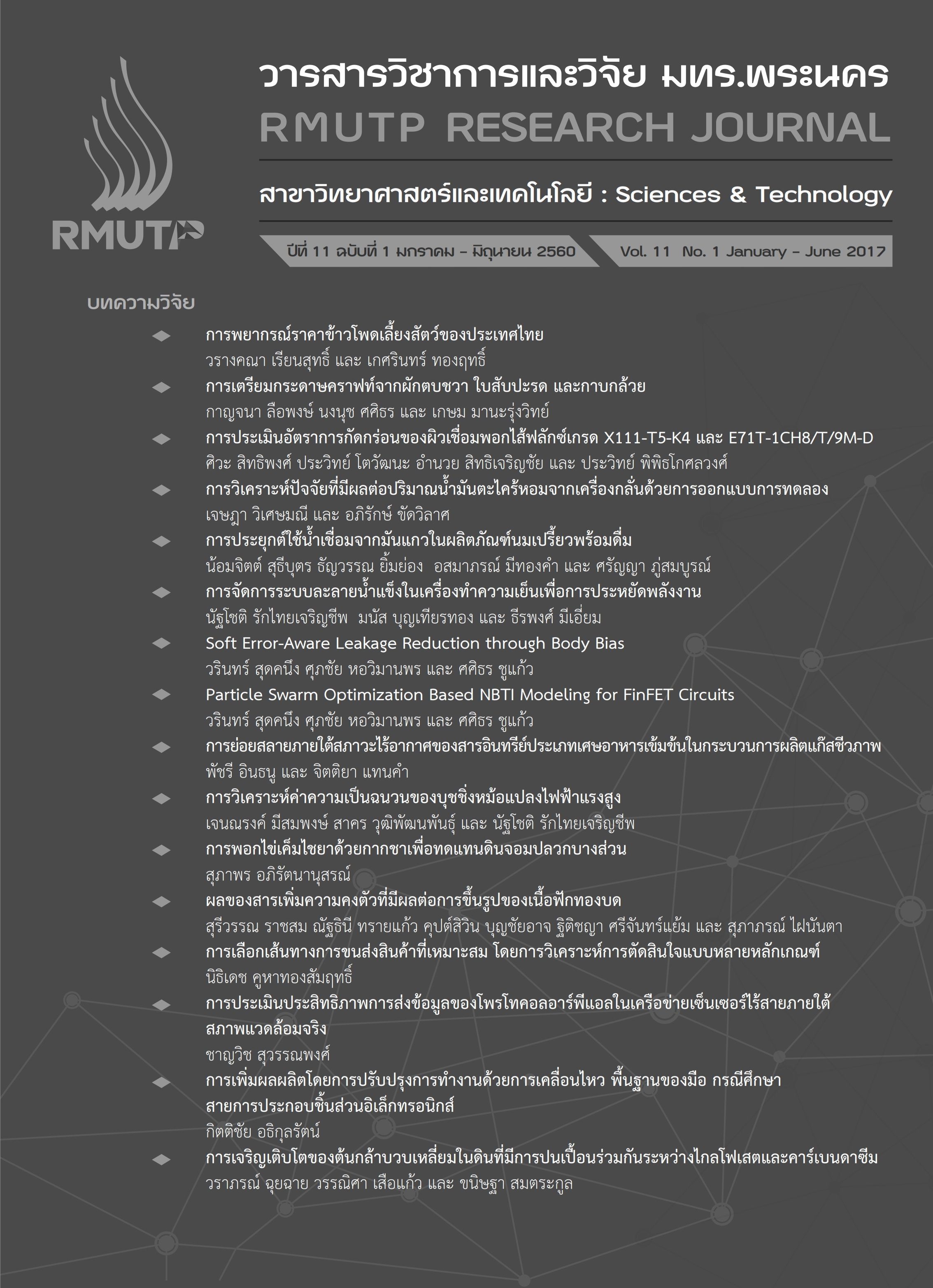การประเมินอัตราการกัดกร่อนของผิวเชื่อมพอกไส้ฟลักซ์เกรด X111-T5-K4 และ E71T-1CH8/T/9M-D
Main Article Content
Abstract
บทคัดย่อ
เพลาใบจักรเรือที่เสียหายจากการกัดกร่อนของคลอไรด์ในน้ำทะเลเมื่อถูกเชื่อมซ่อมด้วยกรรมวิธีการเชื่อมแมกด้วยลวดเชื่อมไส้ฟลักซ์มีอายุการใช้งานหลังผ่านการเชื่อมซ่อมขึ้นกับความสามารถต้านทานต่อการกัดกร่อนของผิวเชื่อมพอก งานวิจัยนี้มุ่งเน้นการศึกษาประเมินความสามารถในการต้านทานต่อการกัดกร่อนของผิวเชื่อมพอกที่แตกต่างกันสองชนิดคือผิวเชื่อมพอกด้วยลวดเชื่อมไส้ฟลักซ์เกรด X111-T5-K4 และลวดเชื่อมไส้ฟลักซ์เกรด E71T-1CH8/T/9M-D ตามลำดับ วิธีการศึกษา เตรียมชิ้นงานตามมาตรฐาน ASTM G1-103 และทดสอบด้วยหมอกเกลือตามมาตรฐาน ASTM B 117 ผลการศึกษาวิจัยพบว่าอัตราการกัดกร่อนของผิวเชื่อมพอกด้วยลวดเชื่อมไส้ฟลักซ์เกรด X111-T5-K4 ต่ำกว่าเกรดE71T-1CH8 /T/9M-D คือ 0.21 และ 0.32 ตารางมิลลิเมตรต่อชั่วโมง ตามลำดับ มวลสูญเสียที่เวลา 48 ชั่วโมงของลวดเชื่อมไส้ ฟลักซ์เกรด X111-T5-K4 และเกรด E71T-1CH8/T/9M-D คือ 0.32 และ 0.48 กรัม ตามลำดับ ดังนั้นเพื่อยืดอายุการใช้งานจากการกัดกร่อนของโซเดียมคลอไรด์ต่อเพลาใบจักรแนะนำให้ใช้ลวดเชื่อมพอกผิวเกรด X111-T5-K4
Abstract
After a propeller shaft was damaged from chloride in sea water, it has been fixed by MAG welding process with flux cored wire. Its service life after welded depends on the corrosion resistance of the weld metal. This research aimed to compare the corrosion resistance of two different weld metals between X111-T5-K4 and E71T-1CH8/T/9M-D flux core wire. The test specimens were prepared according to the ASTM G1-103 standard and tested by salt spray test, conforming to the ASTM B 117 standard. The result of the test showed that the corrosion rate of the weld metal using X111-T5-K4 flux cored wire is lower than the weld metal of E71T-1CH8/T/9M-D flux cored wire, which was 0.21 and 0.32 mm2/hr., respectively. The mass loss at 24 hours of E71T-1CH8/T/9M-D, X111-T5-K4 flux core wire were 0.32 and 0.48 grams, respectively. Therefore, enhancing the service life of propeller shaft from chloride corrosion should use X111-T5-K4 flux core as weld metal


